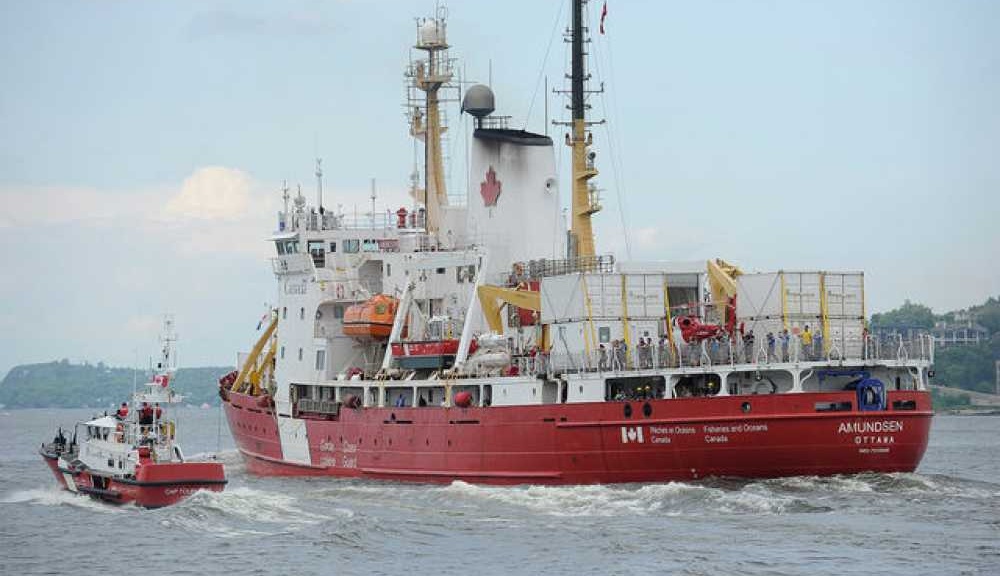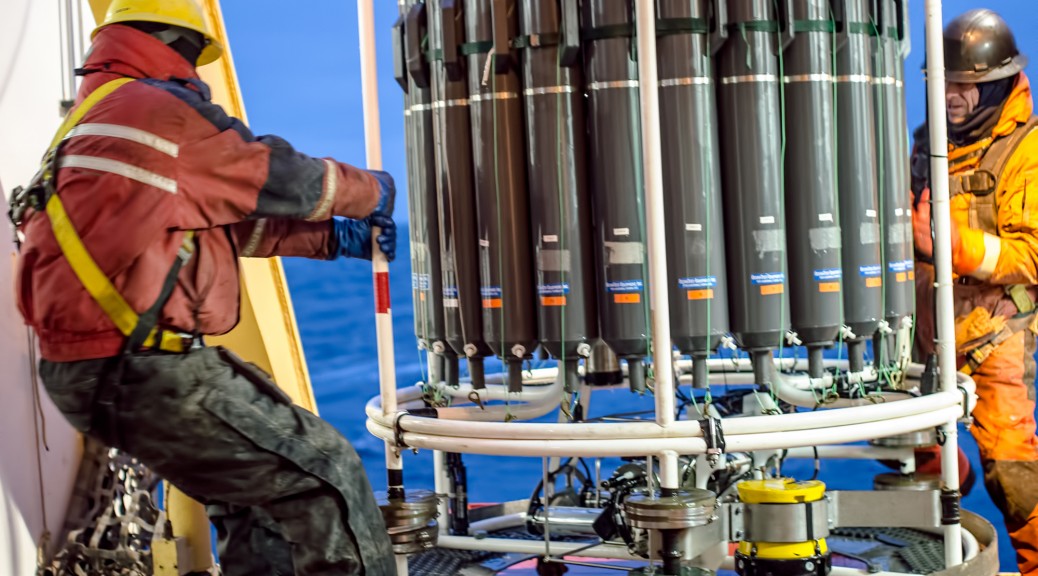This motion, which we refer to as the kinetic energy of the ocean, comes from solar radiative energy and the tidal forces exerted by the sun and the moon. Terawatts of kinetic energy are injected to the ocean (1 terawatt = 1012 watts). The low viscosity of seawater and the scale of oceanic basins render the motion highly turbulent, meaning that the flow is populated with swirls of all sizes that stretch and fold the fluid on itself. Large swirl end up breaking up into smaller ones until viscous forces dissipates the kinetic into heat or potential energy. This happens when swirls are a few millimeters wide. It is easily possible to see how this happens only by looking at two fluids of different densities, say an ice cube melting at the surface of a glass filled with warm salty water that we gently mix (Fig. 1c).
Category Archives: Science at sea
Scientists on their way to the Arctic
Last Friday, the Research Icebreaker CCGS Amundsen, with its 80 Green Edge and crew members, left Québec to Baffin Bay to study the impact of climate change on the phytoplankton spring bloom and its impact on local life. The leader of the mission, Marcel Babin, shared his first impressions with us. Continue reading Scientists on their way to the Arctic
Scientific work aboard the CCGS Amundsen
The 2016 research cruise on CCGS Amundsen will take place in Baffin Bay near Broughton Island between June 3rd and July 14th. Over the 6 week period, the 40 scientists aboard the Amundsen will sample the atmosphere, sea ice, water column and the ocean floor in order to investigate the mechanisms that initiate and control the phytoplankton bloom occurring in the marginal ice zone each spring .



